Cephalaria
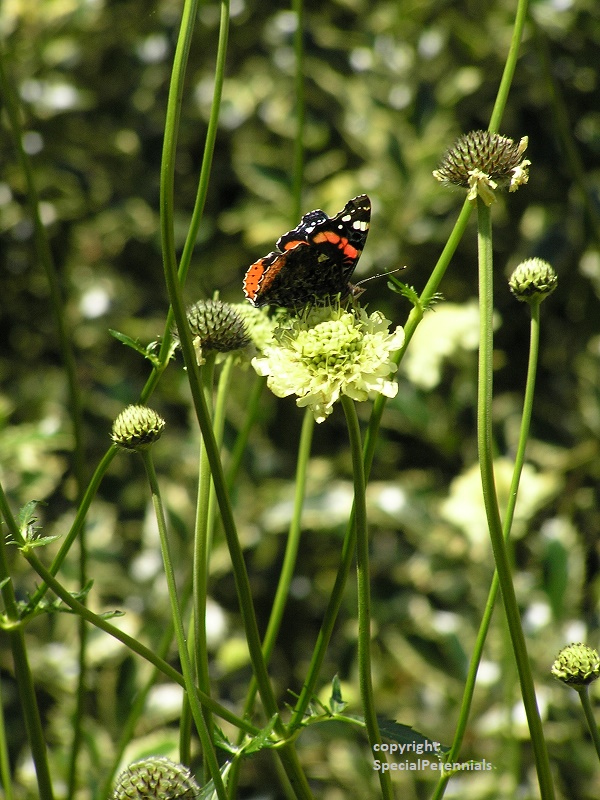
Cephalaria gigantea with a Red Admiral Butterfly in our garden. These mid summer flowers are a great food source for garden butterflies
Basic Facts:
Common name: Giant Scabious. A member of the Dipsacaceae (Teasel) family
Tall plants with pincushion flowers that attract bees and butterflies.
Garden Use:
The stems are tall but airy and "see-through" arising from a rosette of divided leaves making them good for both the back of the border and as "spot plants" to add height nearer to the front of a planting.
Wildlife Interest:
Absolutely brilliant for bees, hoverflies and butterflies.
Finches will eat the seeds in autumn.
Cut Flower Use:
They make good cut flowers.
Cultivation:
Good in most soil type and best in either sun or light shade - although we have grown them in heavy shade as well. Like most members of the this family they prefer limy soils but do exceptionally well on our slightly acid sand.
They probably won't like waterlogged soils in winter.
Propagation:
We grow our mainly from seed although occasionally we will divide a large clump. Divisions do succeed but can take some time to establish. They will self seed if seed heads are left on particularly if there is a gravel path at hand to act as a seedbed. They can also be grown from root cuttings.
Pests and Diseases:
None really!
History:
The name comes from the Greek kephale meaning "head" from the shape of the buds. Mainly from the Caucasus and Alpine regions.
Cephalaria alpina
Always shorter than Cephalaria gigantea, only getting to about 3ft 6in / 105cm. Flowers June - end July. Doesn't self seed in our garden at all. We propagate by division.
Very attractive to bees and butterflies.
Common name: Alpine Yellow Scabious.
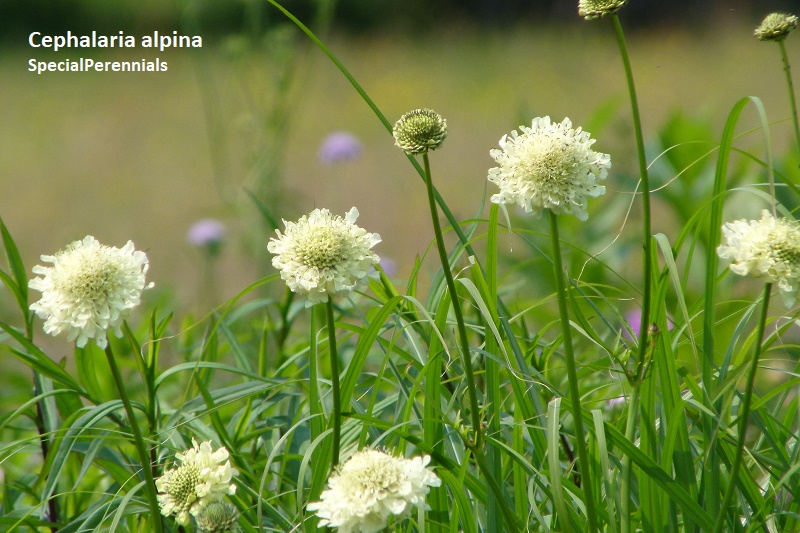
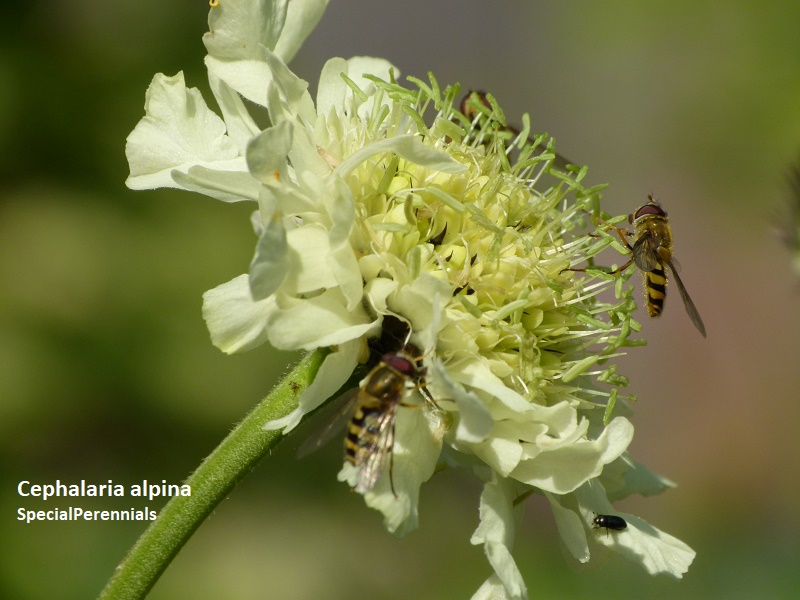
Cephalaria dipsacoides
Greenish-white pincushions on tall, airy stems getting to about 5ft / 150cm. Flowers July-September.
Probably one of the most difficult plants to photograph as a whole plant as the mass of thin, wiry stems seem to disappear in a photo leaving the flowers floating around in the air!
The flower buds are really attractive too.
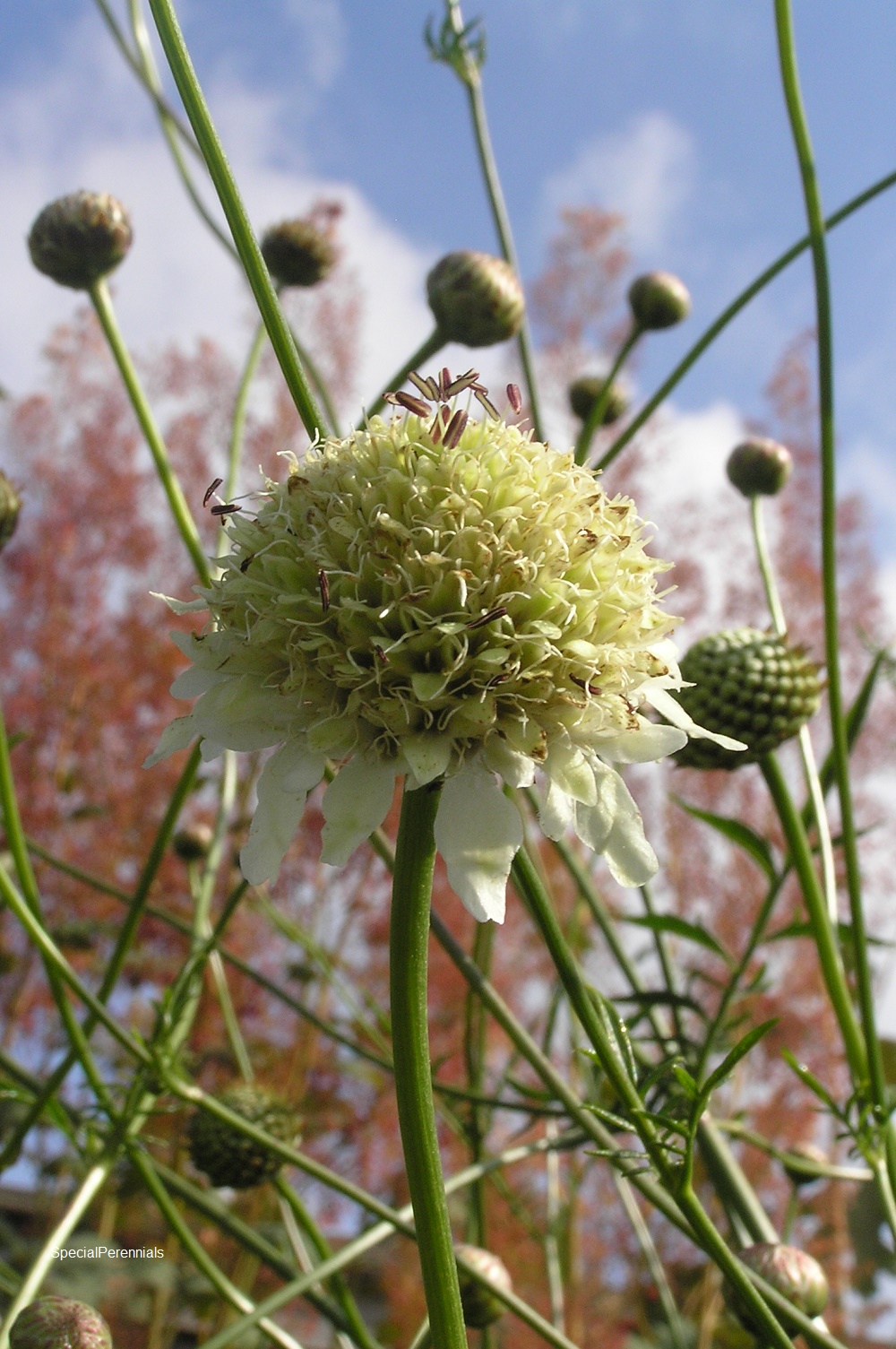
Cephalaria gigantea
Long, strong flower stems reach 5 - 7ft / 150-210cm tall. Flowers are a more buttery cream colour. Flowers June - end July. May repeat in September if cut back after their first flush.
Very attractive to bees and butterflies.
Common name: Giant Yellow Scabious.
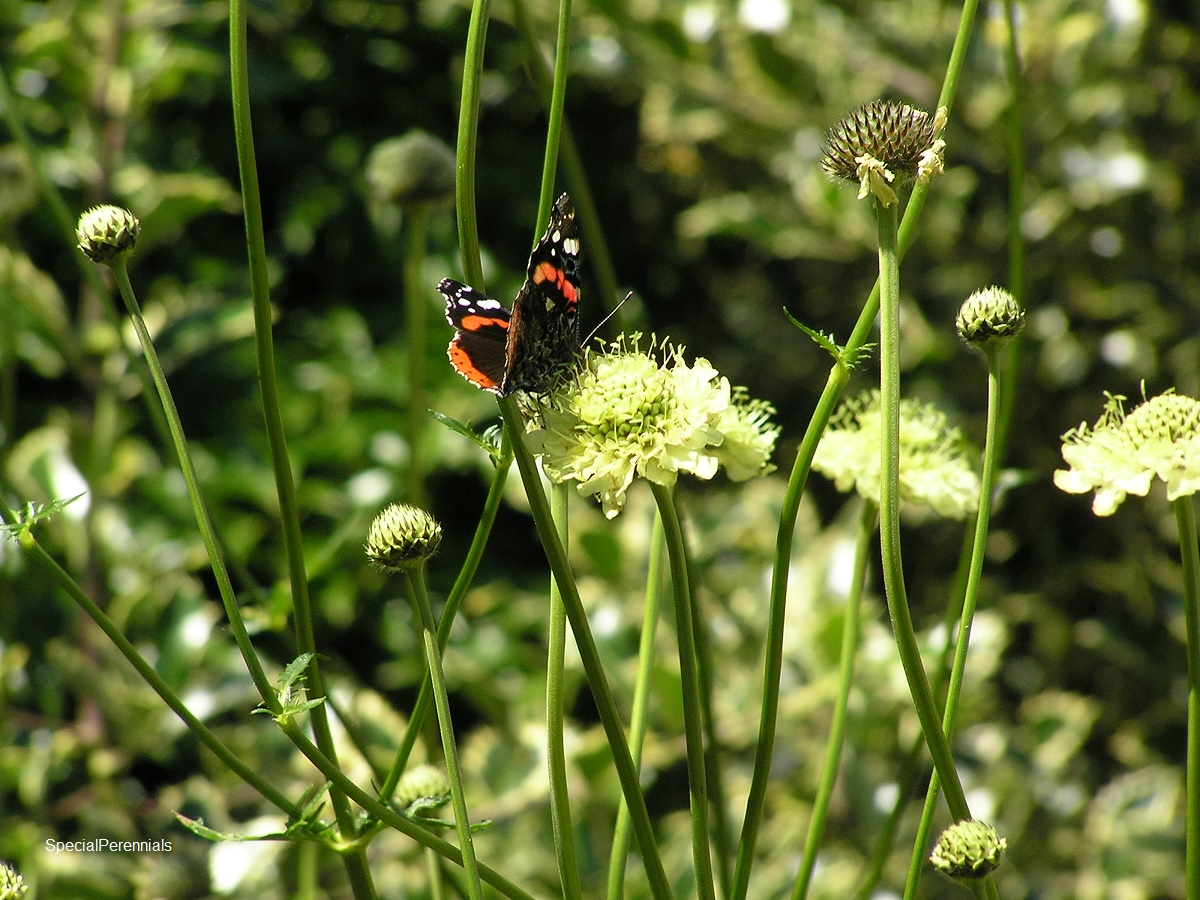
All text and images ŠSpecialPerennials.com 2007 - 2023 A partnership of Janet & Martin Blow. Privacy Statement
